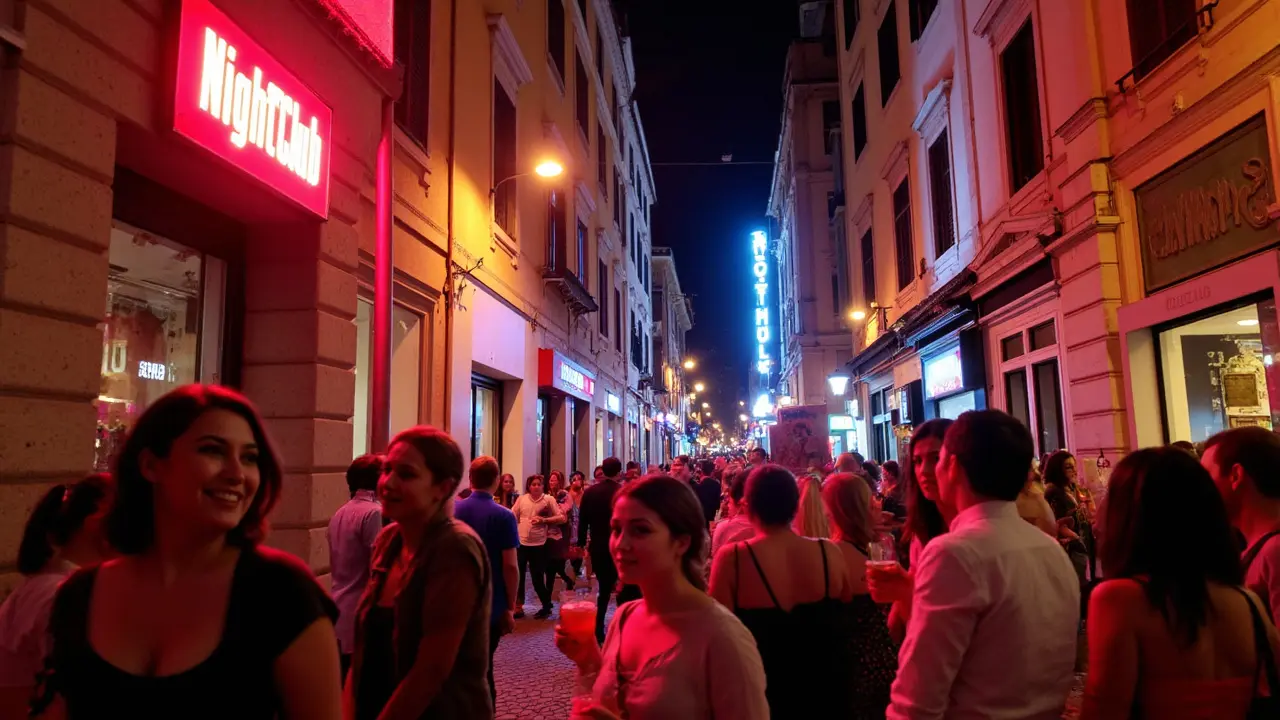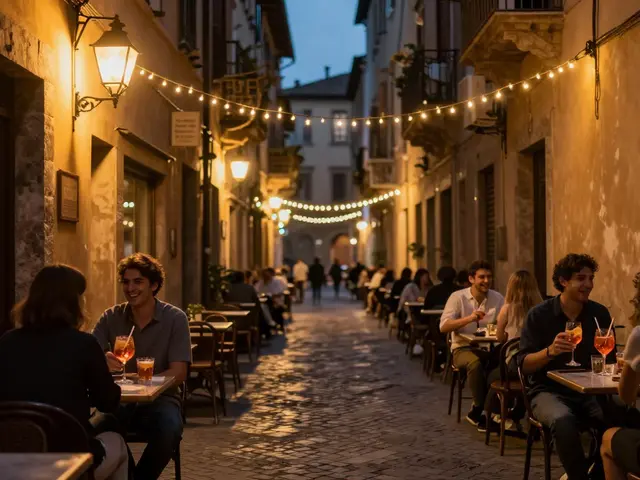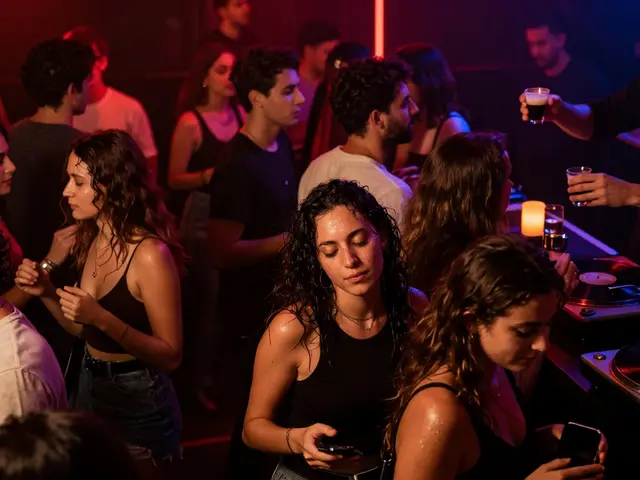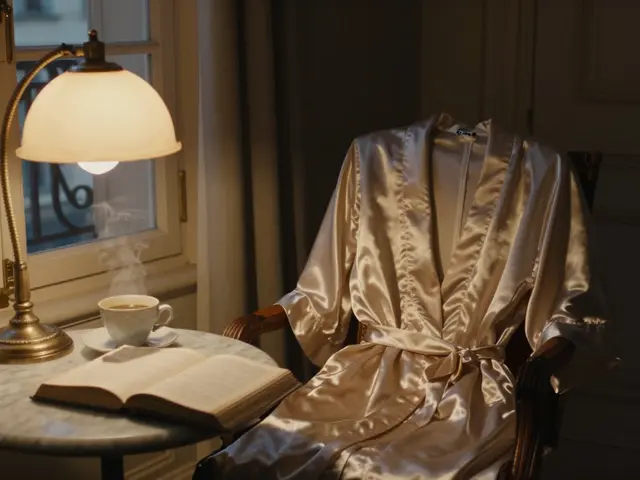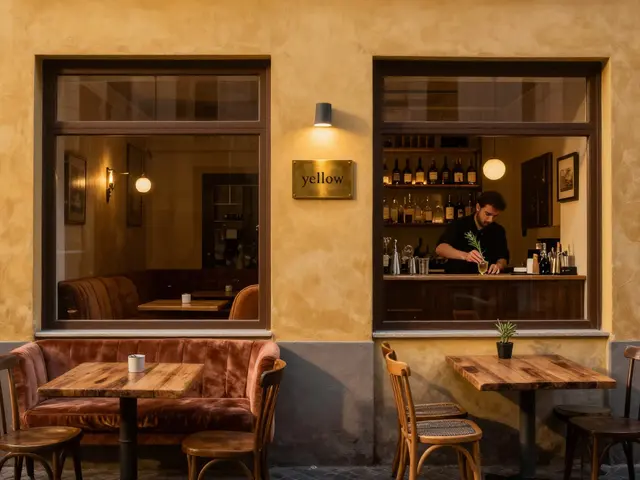Ask anyone who’s spent a night in Rome, and they’ll remind you: clubbing in this city isn’t just about dancing, it’s a full-on experience. The energy, the crowds, even the way Italians greet you at the door feels totally different from other European cities. But here’s what nobody tells you—Rome’s nightclub scene is a maze for outsiders. If you just wander around the city center hoping to bump into the perfect spot, you’ll probably wind up at a tourist trap or watching locals walk past a velvet rope with a nod you can’t pull off.
First thing you need to know: nightclubs in Rome don’t get going until late. Like, really late. If your idea of partying is heading out at 10 PM, you’ll be early enough to catch the cleaners. Most spots don’t even start filling up until close to midnight. Keep that in mind if you want to actually dive into the scene instead of standing there with the staff setting up tables.
And about location—clubs in Rome aren’t all clumped together in one obvious district. Many of the best nightlife spots are tucked inside old buildings or hidden in plain sight. You won’t see huge neon signs. Locals know them, but tourists might easily walk by. It’s way more practical to do a little research or ask someone who actually goes out in Rome, not just a random hotel concierge.
Planning on dancing the night away? Most club queues in Rome move slow, and big groups may not get in at all if you don’t have a reservation. Solo or small group? You’ll have better luck, but expect to flash your ID (yes, even if you clearly look over 30). Age checks are a real thing here, not just a formality.
- Where the Locals Go
- Dress Codes, Drinks, and Entry
- Surviving the Night: Tips and Tricks
- Beyond Dancing: What Makes Rome’s Clubs Unique
Where the Locals Go
If you want to skip the tourist crowd and see the real Rome after dark, you’ll need to get out of the main piazzas and look for the clubs Romans actually love. The Testaccio district is a classic starting point—it's stacked with long-running favorites like Coyote and Akab, and you’ll bump into a mix of young Italians and seasoned clubbers. Testaccio clubs often hug the old Monte dei Cocci hill, so don’t be surprised if you’re partying in a spot that used to be a warehouse or even a cave.
If you’re into electronic or alternative beats, the Ostiense area is your zone. Here you’ll find Goa Club—probably the best-known name in the whole city for underground nights. This spot pulls in international DJs all year round and is serious about sound quality. They host up to 1,000 people some nights, so it’s not a tiny local bar pretending to be big. It’s the real deal.
On the other hand, Trastevere is where you’ll stumble on more laid-back club-lounge vibes. While not strictly "clubs," Freni e Frizioni and Alcazar Live both turn into party spots with the right crowd and on weekends. You’ll also get a healthy dose of live music mixed with your late-night cocktails.
If you check out local polls, you’ll see these spots always ranking in the top five for night club Rome experiences:
| Club Name | Neighborhood | Music Style | Typical Cover |
|---|---|---|---|
| Goa Club | Ostiense | Electronic/Techno | €15–€25 |
| Coyote | Testaccio | Dance/Pop/Latin | €10–€20 |
| Akab | Testaccio | Disco/House | €10–€18 |
| Freni e Frizioni | Trastevere | Lounge/Eclectic | Usually Free |
| Alcazar Live | Trastevere | Live Music/Club | €8–€15 |
Locals almost always check the club’s Instagram or Facebook before heading out. It isn’t just about the theme of the night—lineups, drink specials, and entry rules can change fast. Don’t expect to pay with a card everywhere—stash some cash to cover entry and the first round at least. And seriously, if you’re hearing Italian more than English when you walk in, you’ve found the right place.
Dress Codes, Drinks, and Entry
Don’t even think about showing up to a night club Rome hotspot in flip-flops and a tank top. Clubs here take dress codes seriously. Guys are usually expected to wear nice jeans or trousers, a shirt, and decent shoes—sneakers won’t always fly, especially at popular spots like Shari Vari Playhouse or Piper Club. Women can get away with stylish tops and skirts or dresses, but avoid anything too casual or beachy. If you’re dressed too laid-back, the bouncer will turn you away without a second thought.
Cover charges are the norm in Rome’s clubs, and prices vary a lot. Expect to pay anywhere from €10 to €25 just to get in on weekends, and that usually includes your first drink. Some clubs may hike up entry fees for special DJs or themed nights. Pro tip: if you’re on a tight budget, keep an eye out for flyers and social media events—sometimes you’ll snag early-bird entry deals or ladies’ night offers where your entry is free or discounted if you arrive before midnight.
Drinks aren’t cheap. Cocktails will usually set you back €10 to €15, and classics like spritzes and negronis are always safe bets. Table service gives you a reserved spot but comes with a hefty price tag (think €100 and up for a bottle and mixers), so only go for this if you’re with a group ready to split the bill. Don’t expect the bartender to make your wild custom creation; stick to standard drinks, and you’ll avoid eye rolls or confused looks.
Another thing that throws off first-timers: clubs check IDs, and you need to be 18 to get in. Some places target a slightly older crowd (think 25+), so check the rules before heading out. Bouncers aren’t shy about turning people away based on vibe, age, or even attitude in the line. When in doubt, just be friendly—a little Italian goes a long way here.
"Roman nightlife is all about style and confidence. A night out is as much about what you wear and how you carry yourself as what you drink or dance to," says Federica Angelico, editor of RomaNotte magazine.
If you want to skip the line, make a reservation online (many clubs now use WhatsApp or Instagram for bookings), especially for big weekends or events. Always have cash. Some smaller clubs still don’t accept cards for entry—even in 2025. Last thing, look up each club’s entry policy before heading out, because some do switch things up each season.
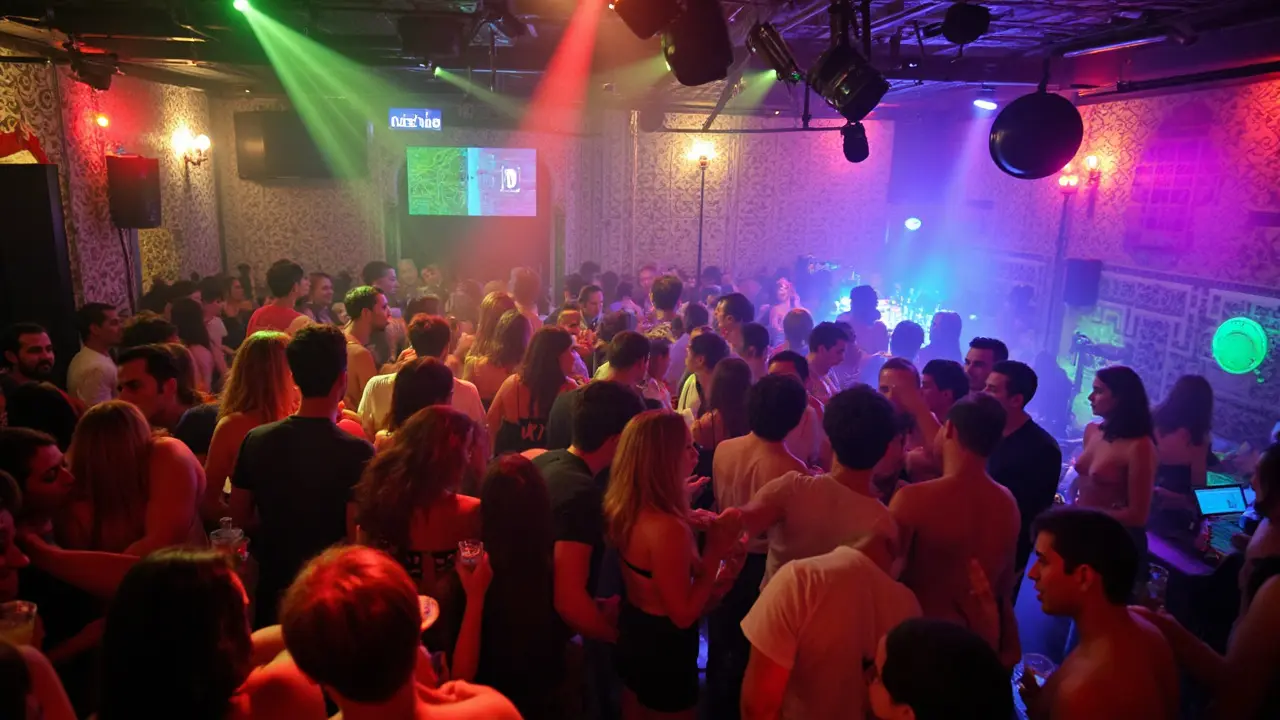
Surviving the Night: Tips and Tricks
You want the real *night club Rome* experience, not just a random expensive cocktail and a story about waiting outside in the cold, right? Here’s what you actually need to know to make it through the night and come out with something to brag about.
- Timelines matter. Most clubs don’t really get busy till midnight, and some go until 5 or 6 AM, especially places like Shari Vari and Piper. If you show up before 11:30 PM, you’ll look like a rookie—and probably hang around awkwardly with the staff. Plan a late dinner, grab a spritz at a nearby bar, and arrive fashionably late.
- Cover charges can be steep, usually €15–20, especially for big-name DJs or weekends. Entry typically comes with one drink. Watch out for "special" events—on some Saturdays or for holiday weekends, it can jump to €30 or more.
- Dress codes aren’t just talk. Guys in sneakers/shorts have a high chance of being turned away. For women, heels aren’t required, but looking put-together wins points. Some places like Room26 or Art Café can get picky, especially on weekend nights.
- Cloakroom isn’t free. Bags and jackets cost €2–4 each to stash, and this is not optional in crowded clubs. Bring cash for this—cards usually aren’t accepted at cloakrooms.
Some nights, getting in is half the challenge. Big groups (especially of guys) get turned away a lot, even with a reservation. Mixed groups or couples? You’ll have better luck. If you’re traveling solo or just with a friend, your odds skyrocket.
| Club | Typical Cover (€) | Peak Hours | Minimum Age |
|---|---|---|---|
| Piper Club | 20 | 12:30–4:00 AM | 18 |
| Shari Vari | 15–20 | 1:00–4:00 AM | 18 |
| Room26 | 15 | 12:00–3:30 AM | 21 |
| Art Café | 20 | 1:00–4:00 AM | 18 |
Remember, bartenders pour on the light side—don’t expect strong drinks like you might get in London or New York. Want more than one drink? That's another round of €10–15. ATMs inside clubs charge higher fees. Better to grab cash beforehand.
To keep your night fun (and safe), always keep an eye on your stuff. Like any big city, clubs can get busy, and things disappear fast. Never leave your phone or bag on a table while dancing.
If you need a ride home, don’t bother waiting for a taxi outside the club at closing time—that line moves at a snail’s pace. Instead, walk a block or two away and grab a cab with a phone app (Free Now or IT Taxi work well in Rome). Late-night buses do run, but can be sketchy, especially if you're not local.
Quick recap? Arrive late, get a little dressed up, bring enough cash, and enjoy the ride. The best stories come from the people you meet and the random moments no guidebook covers.
Beyond Dancing: What Makes Rome’s Clubs Unique
Rome’s nightclubs aren’t just about the music or the dance floor—they offer stuff you won’t find everywhere else. Think rooftop views that show the Colosseum all lit up, food served at 3 AM (yes, even real pasta), and themed rooms that change the whole vibe in one step. Let’s get into what really sets them apart.
- Night club Rome is about socializing as much as dancing. Don’t be surprised if you see groups hanging out by the bar for hours before anyone hits the dance floor. Italians value conversation; it’s not weird to be more focused on catching up than on busting a move.
- Some clubs host live bands before the DJ starts. Places like Vicious Club and Lanificio 159 mix genres—one night you’re listening to indie pop, the next it’s techno. It keeps the crowd diverse and you never know what you’re walking into.
- Cultural events are common. From art installations to film nights, local clubs blur the line between a party spot and a creative hub. For example, Goa Club has teamed up with artists to turn rooms into temporary galleries.
- Dress code sometimes means “be yourself, but put effort in.” Sneakers are fine at some venues but at classy spots—like Shari Vari Playhouse—dress sharp. You might be surprised at how low-key strict it is; folks line up with jackets draped over their shoulders (a classic Roman move).
- The crowd's age is spread out. You’ll meet students at Akab, and 30-somethings at Jerry Thomas Speakeasy. No one blinks at mixed ages in a group. Everyone’s just there for a good time.
Cocktails in Roman clubs are a step above the watered-down stuff you might expect. Lots of bartenders have trained at mixology schools, and you’ll see unique local ingredients—Artichoke liqueur, homemade syrups, even espresso martinis with real Italian espresso. That means drinks can be pricier, but you’ll actually get what you pay for.
| Club | Unique Feature | Typical Crowd |
|---|---|---|
| Goa Club | Art installations, big-name DJs | Early 20s to mid 30s |
| Shari Vari Playhouse | Multiple themed rooms | Mixed, mostly stylish young professionals |
| L’Osclub | Rooftop terrace with city views | Mid 20s and up, tourists and locals |
| Jerry Thomas Speakeasy | Speakeasy cocktails, live jazz | Late 20s to 40s |
The takeaway? Don’t just show up expecting another crowded dance floor. You might walk into an art show, catch an actual chef twirling pasta, or sip a negroni under the stars. Rome’s clubs care about atmosphere and experiences you’ll chat about long after your trip ends.
